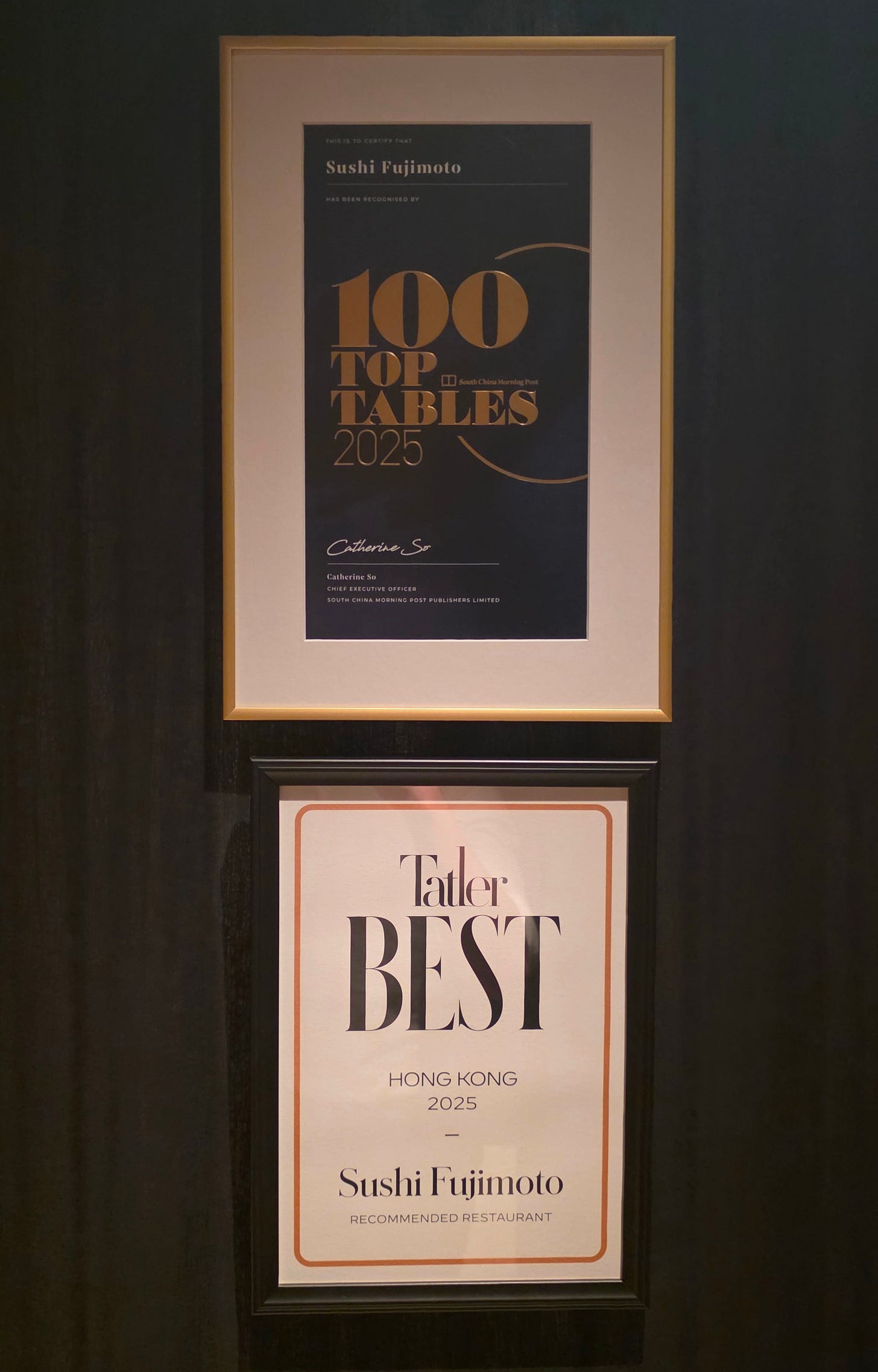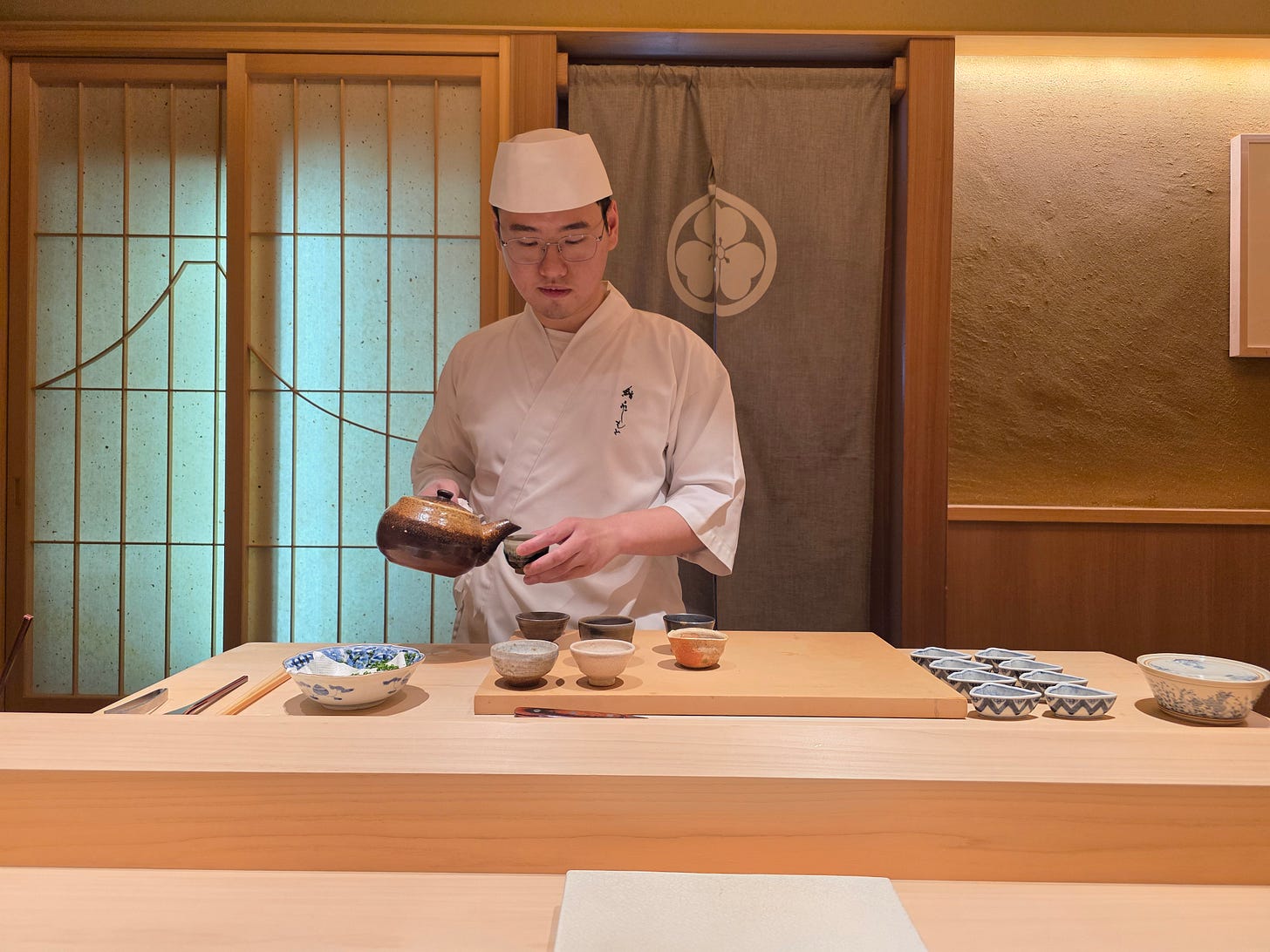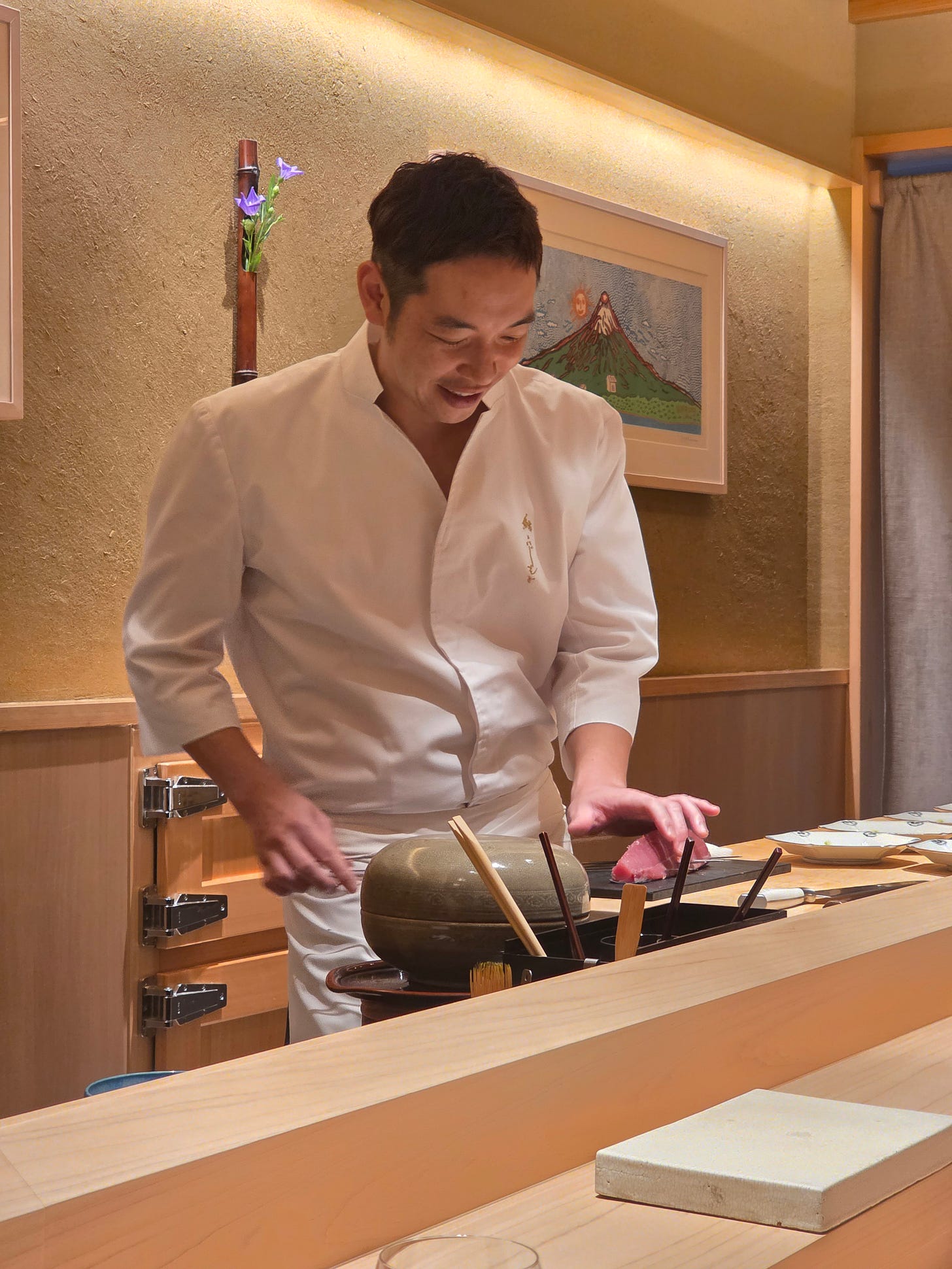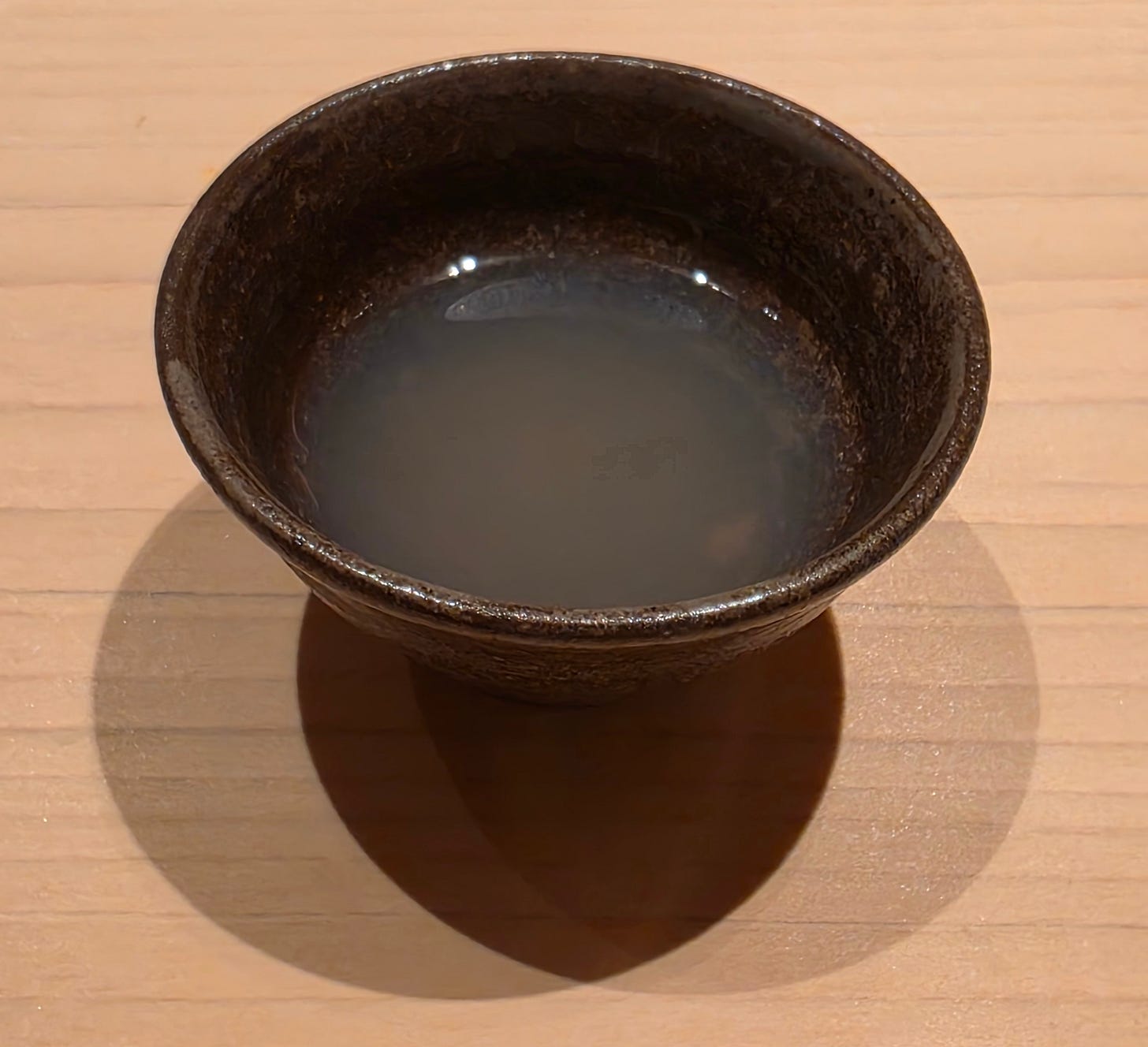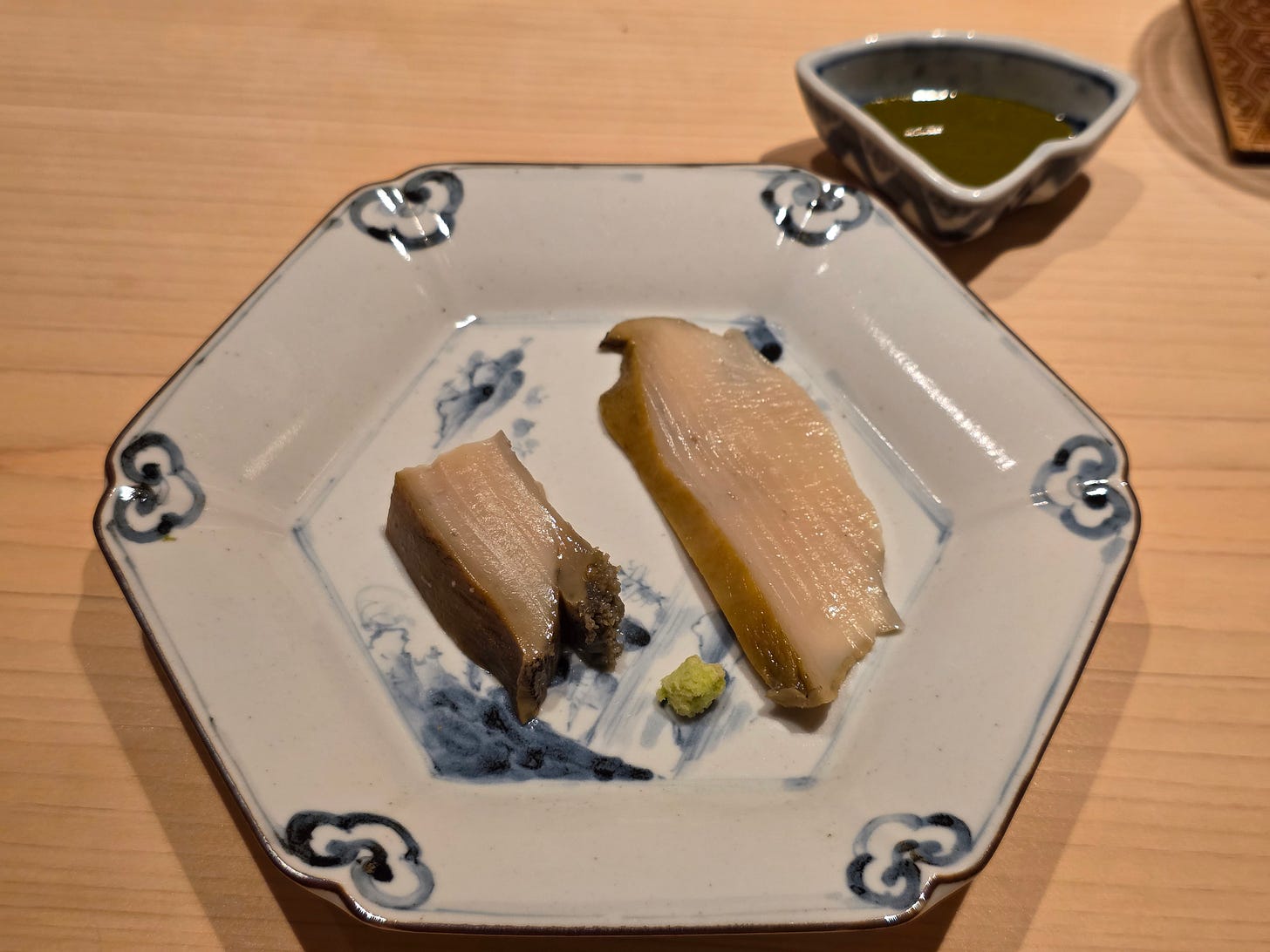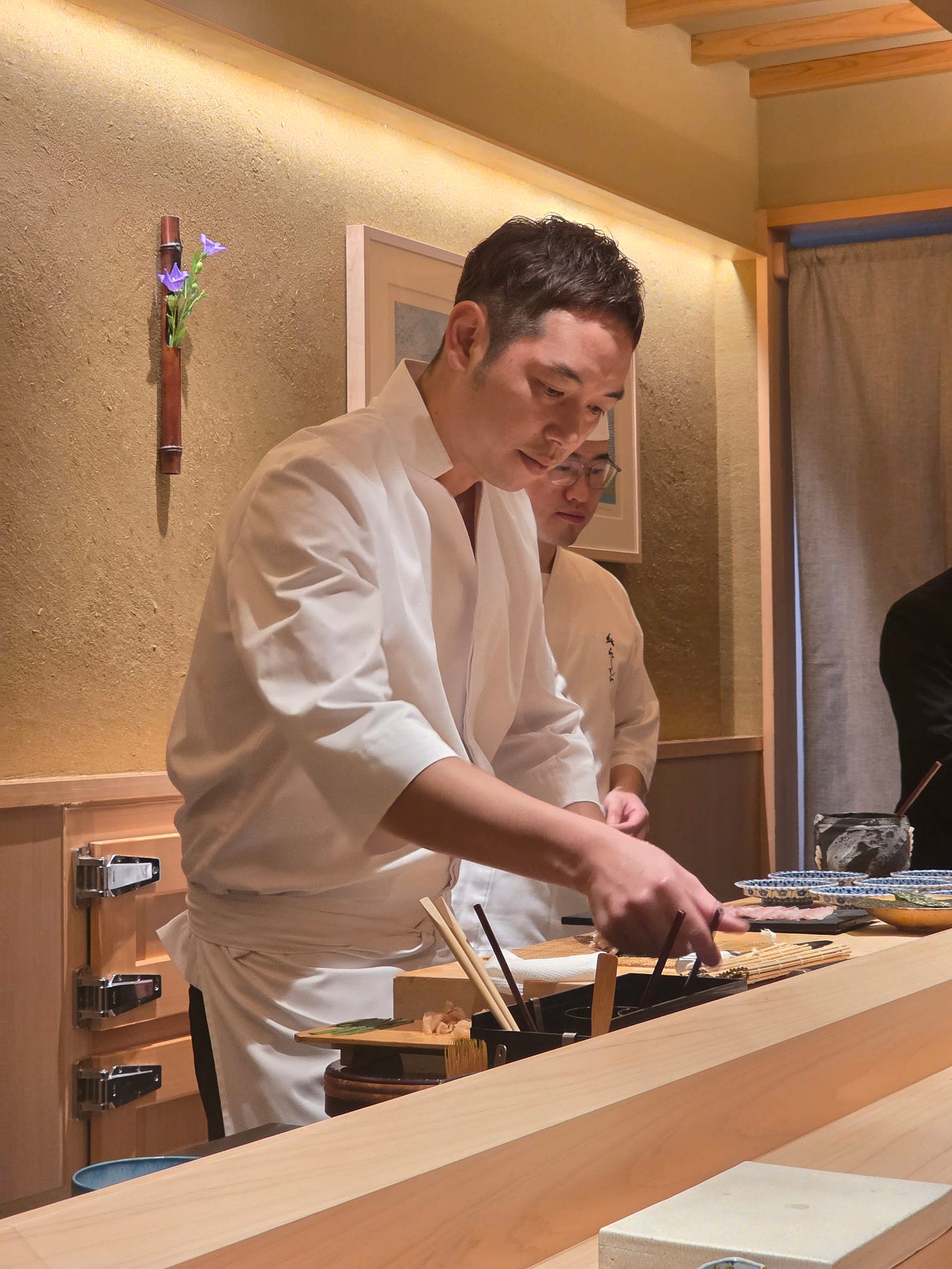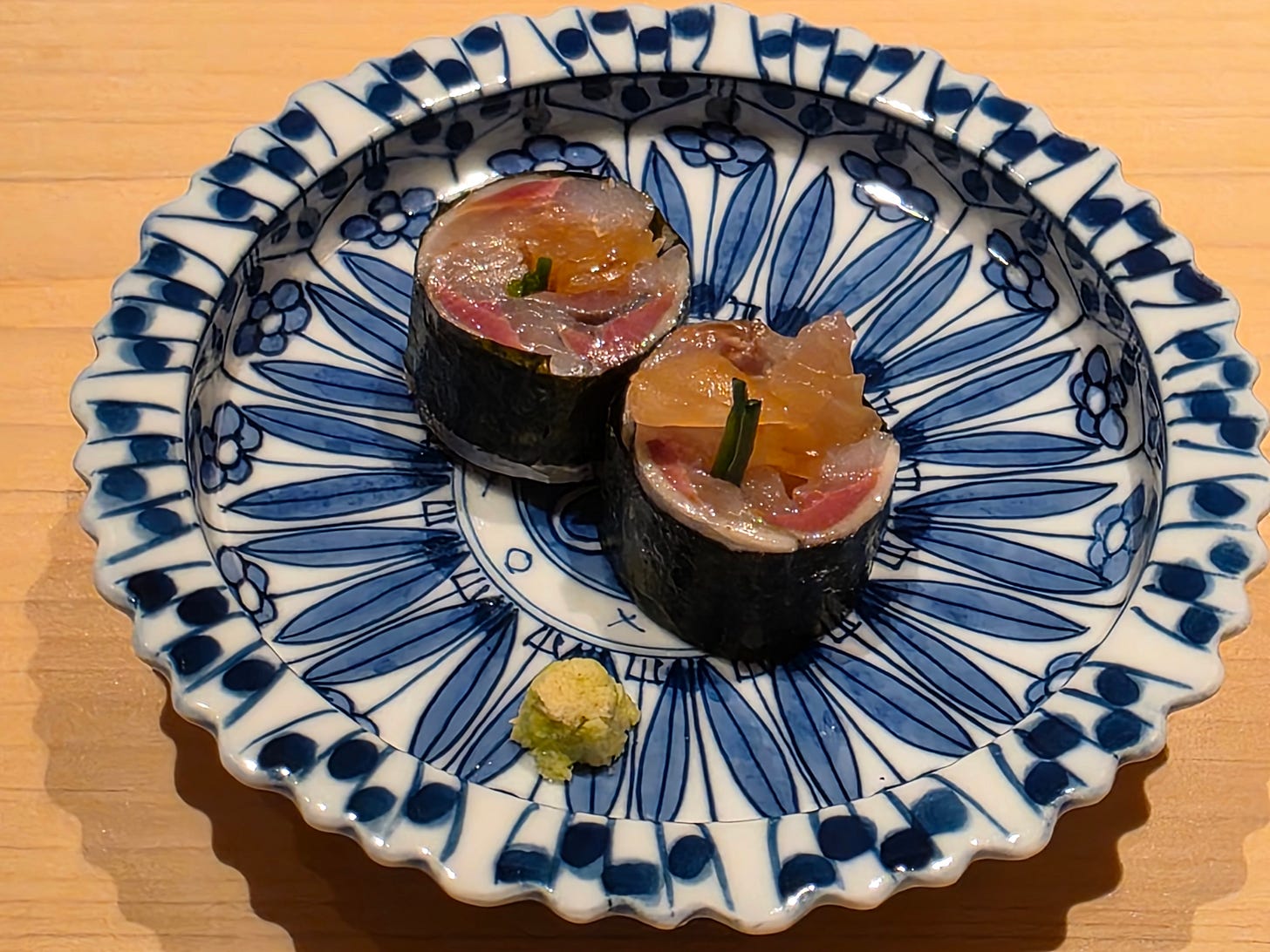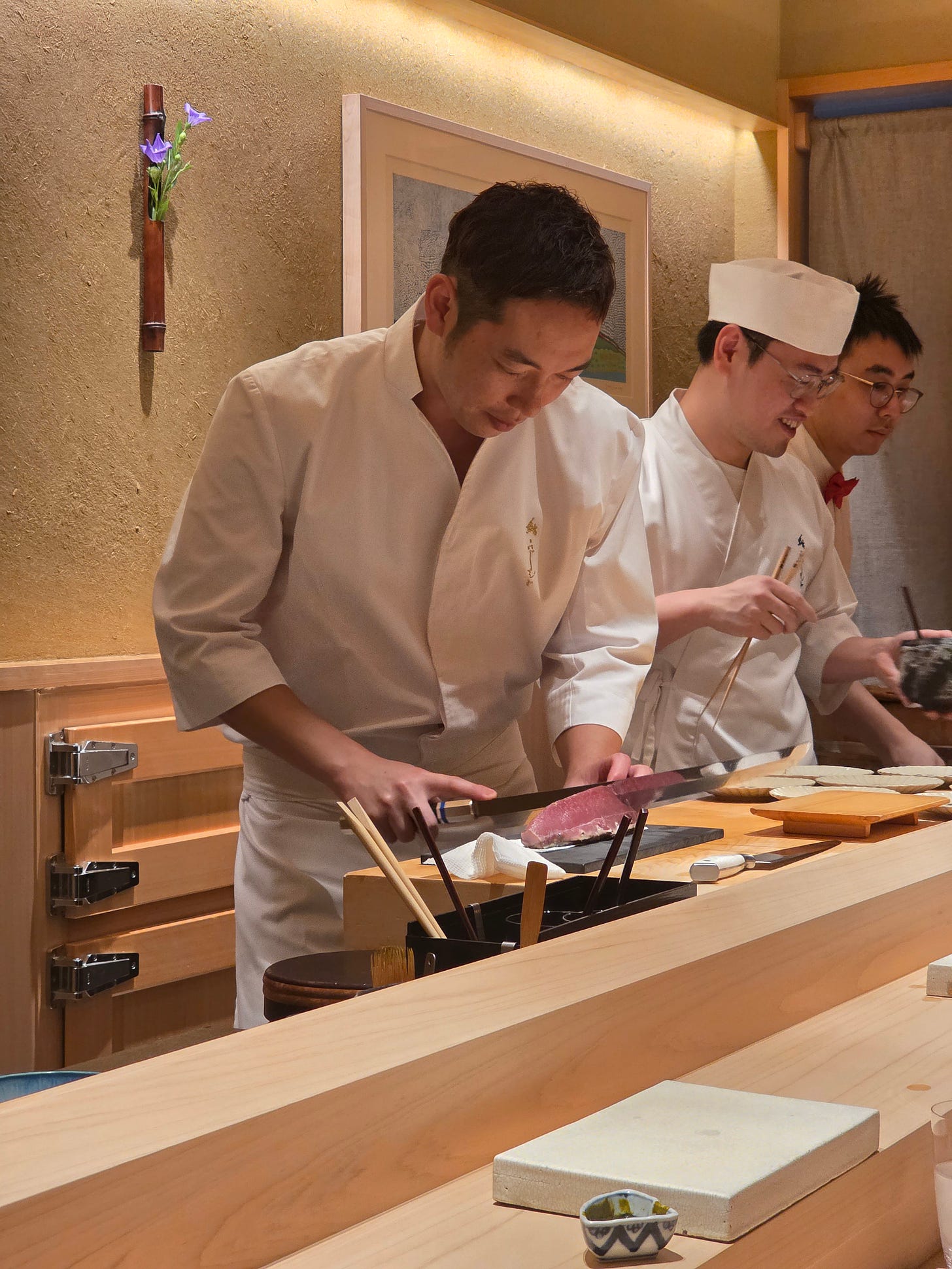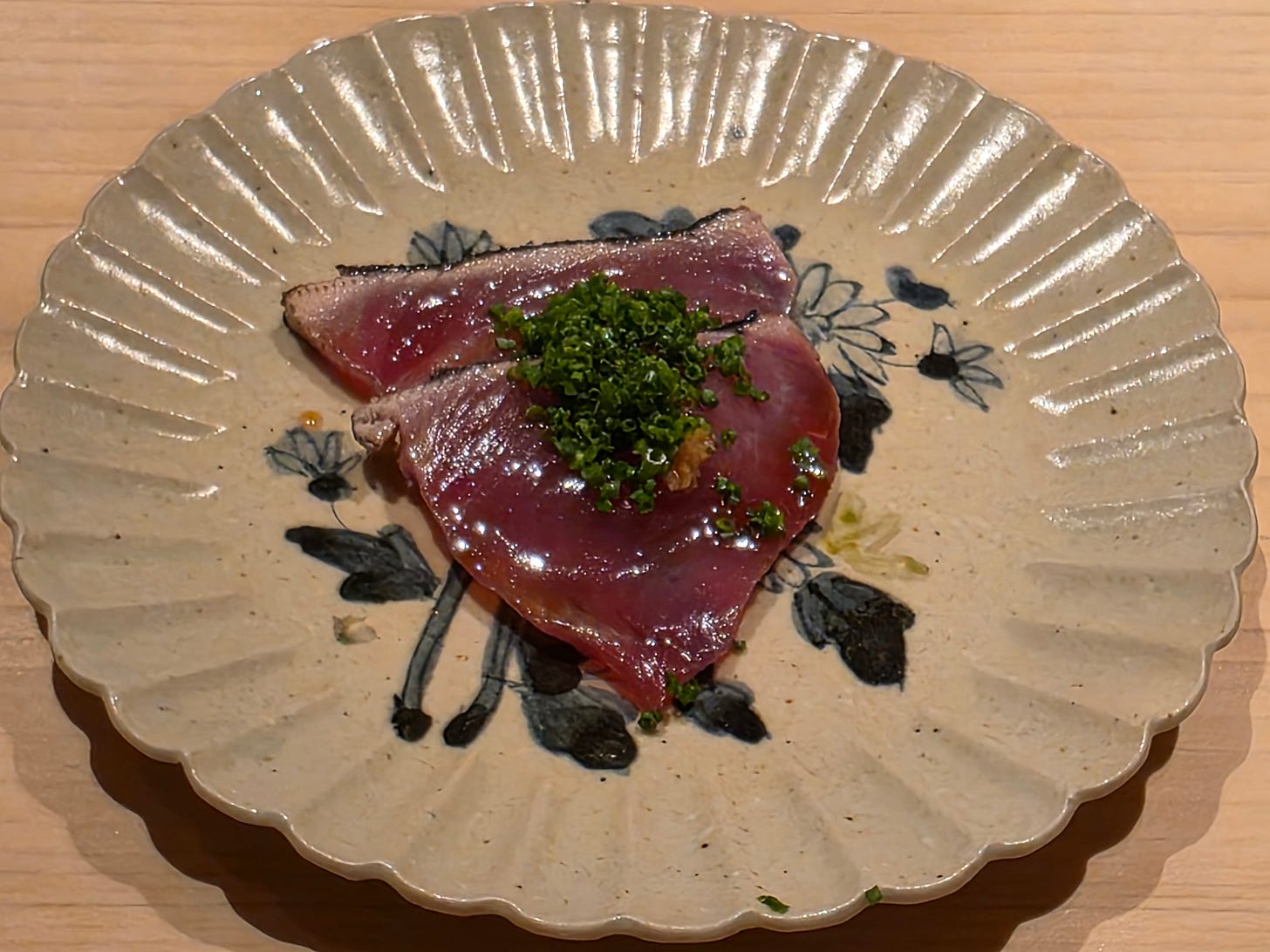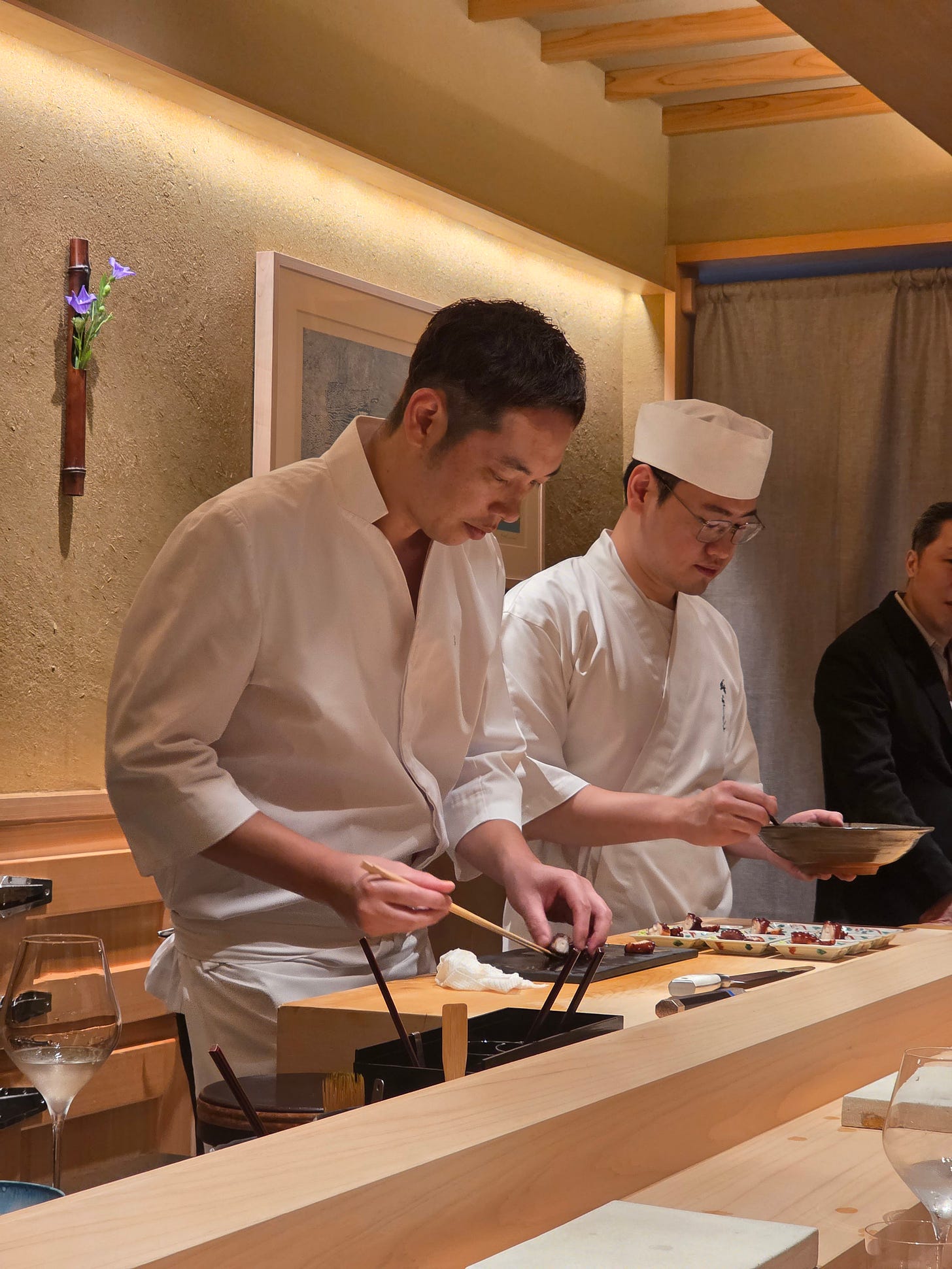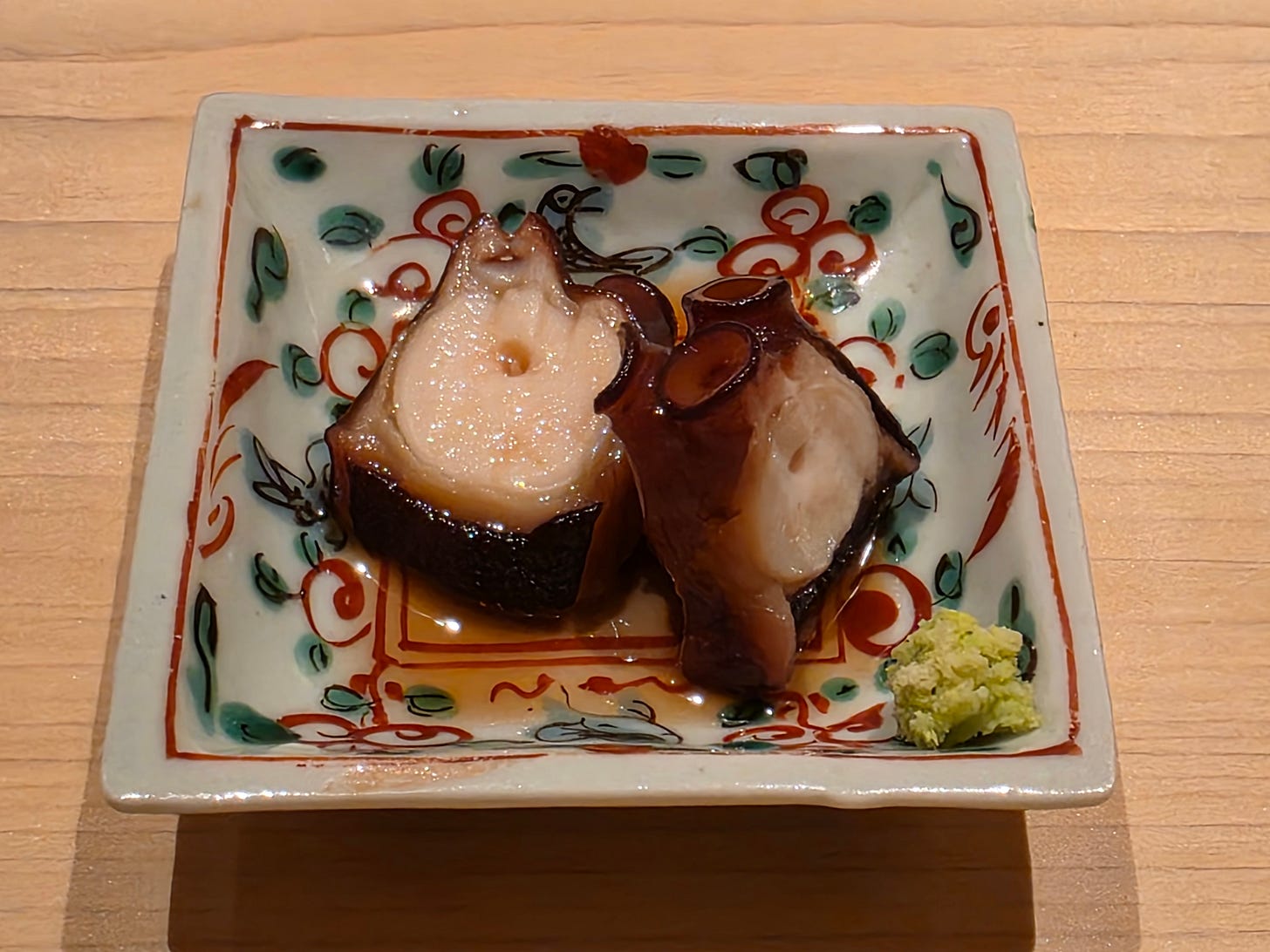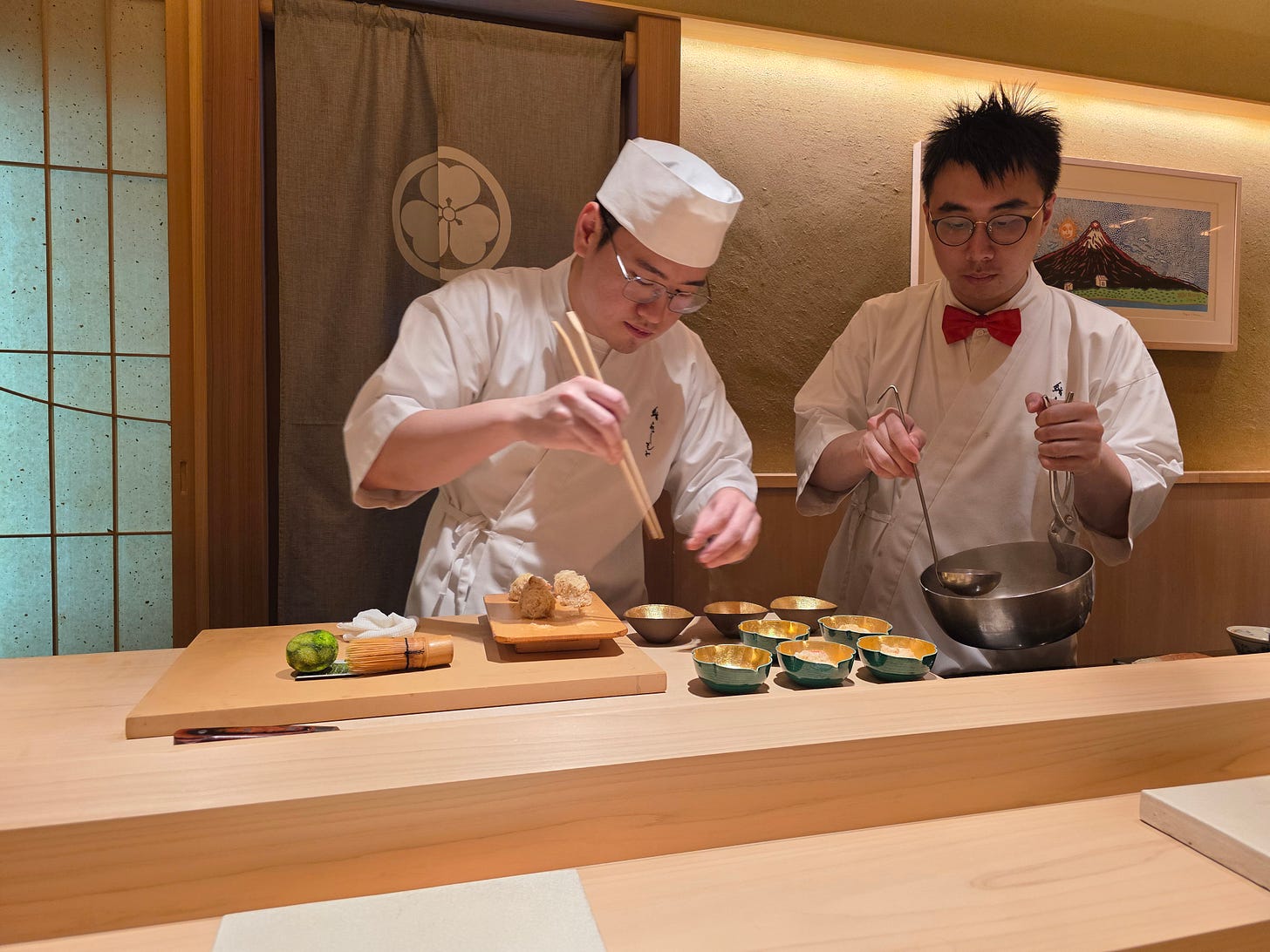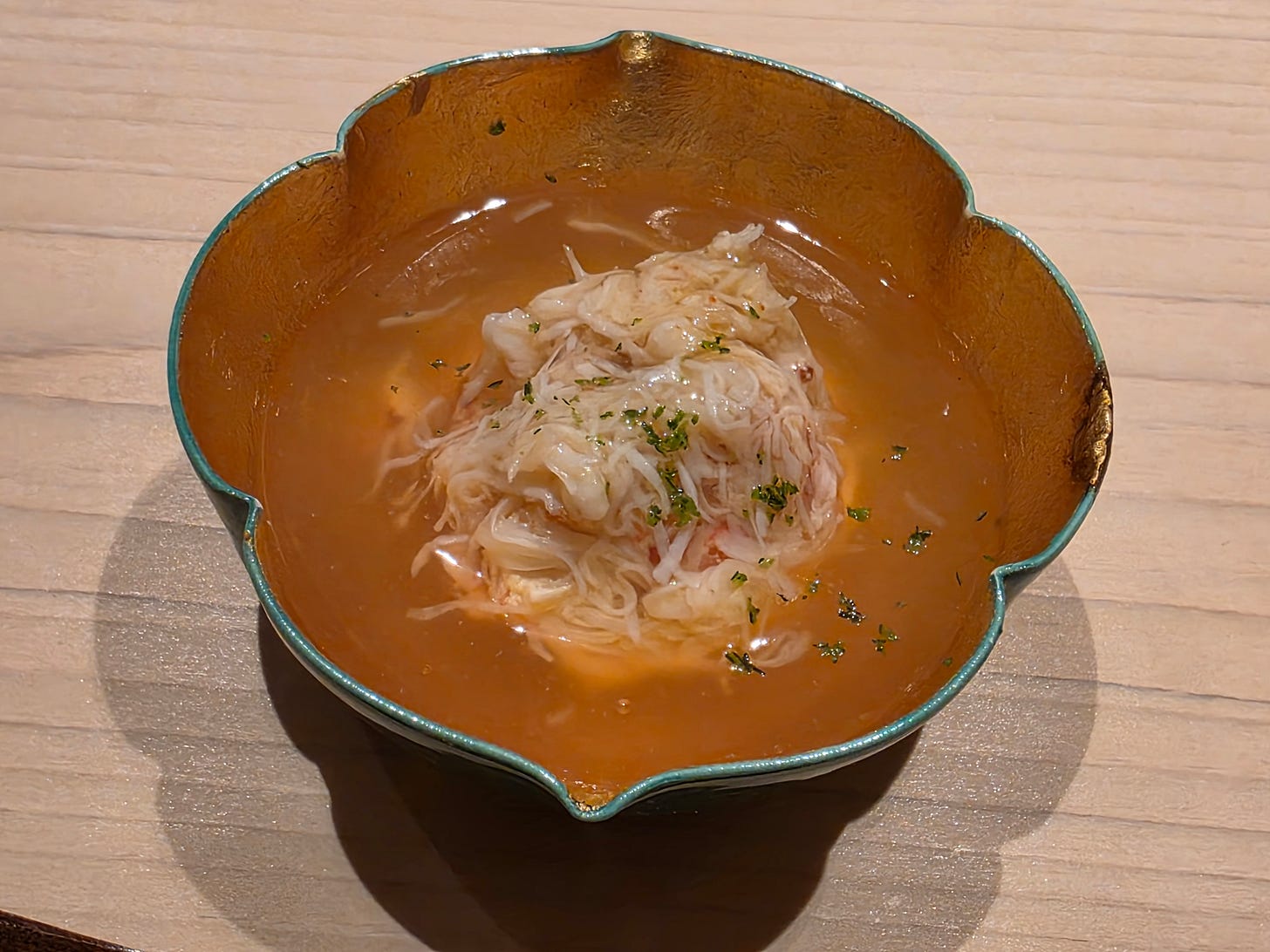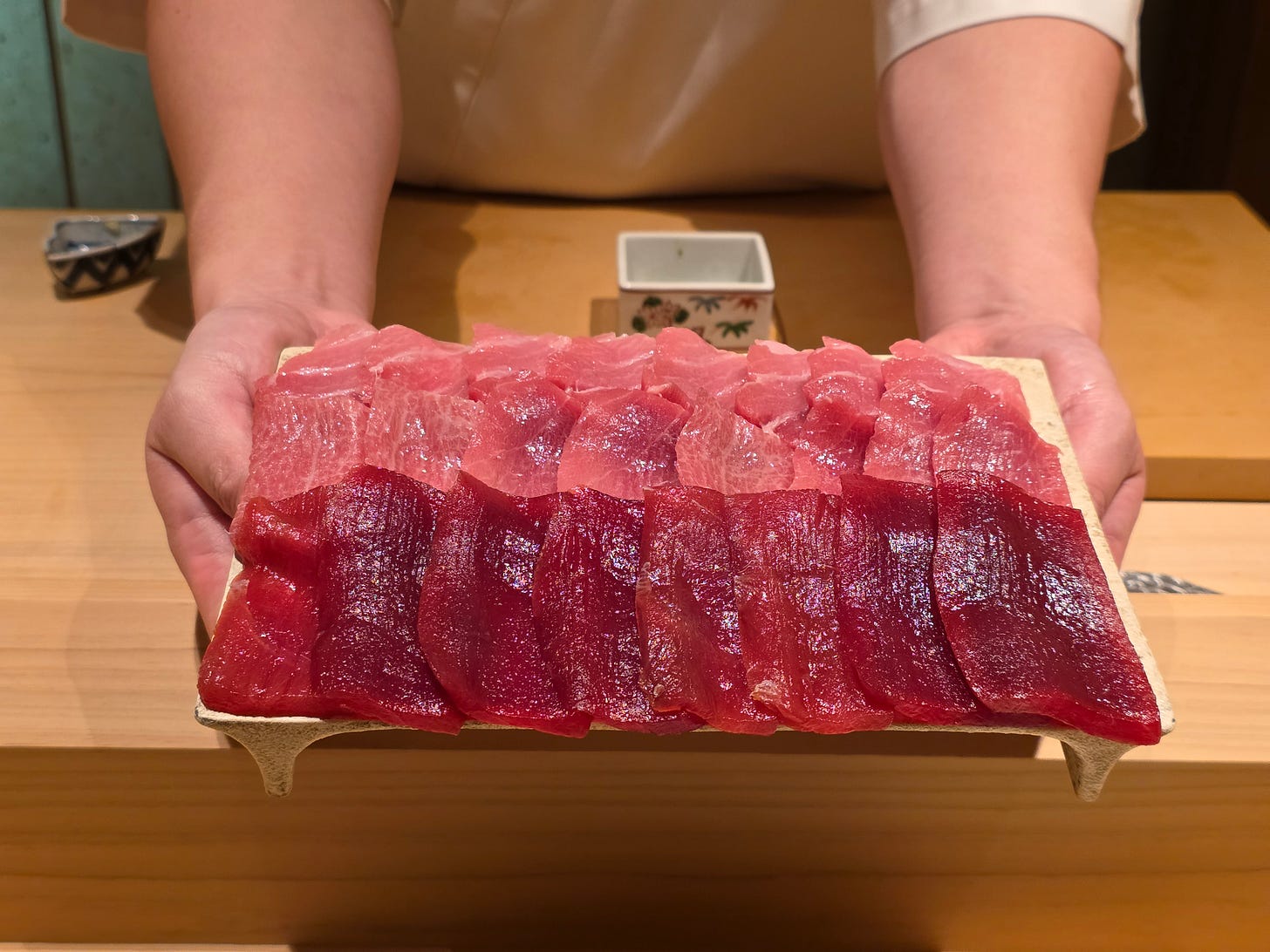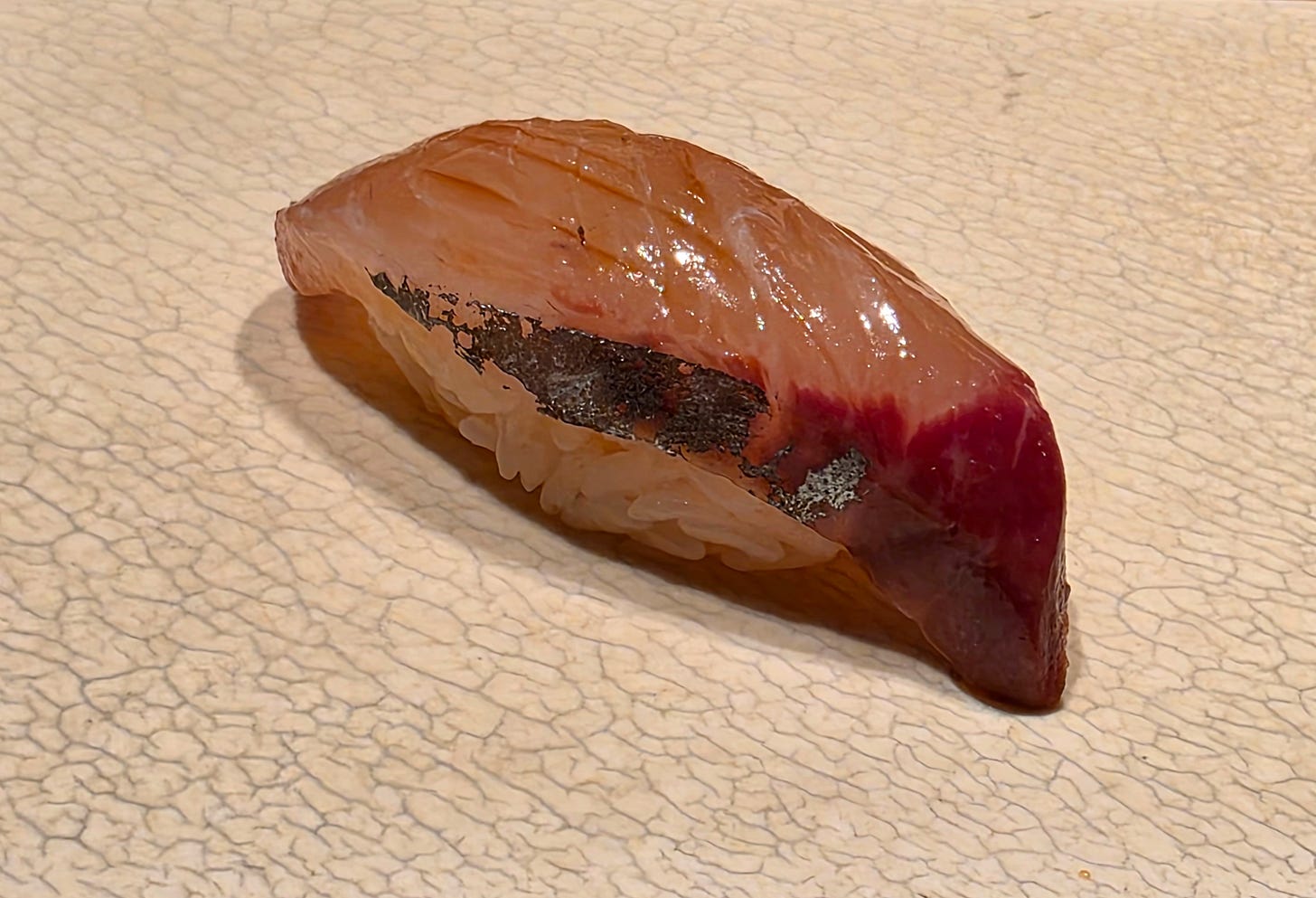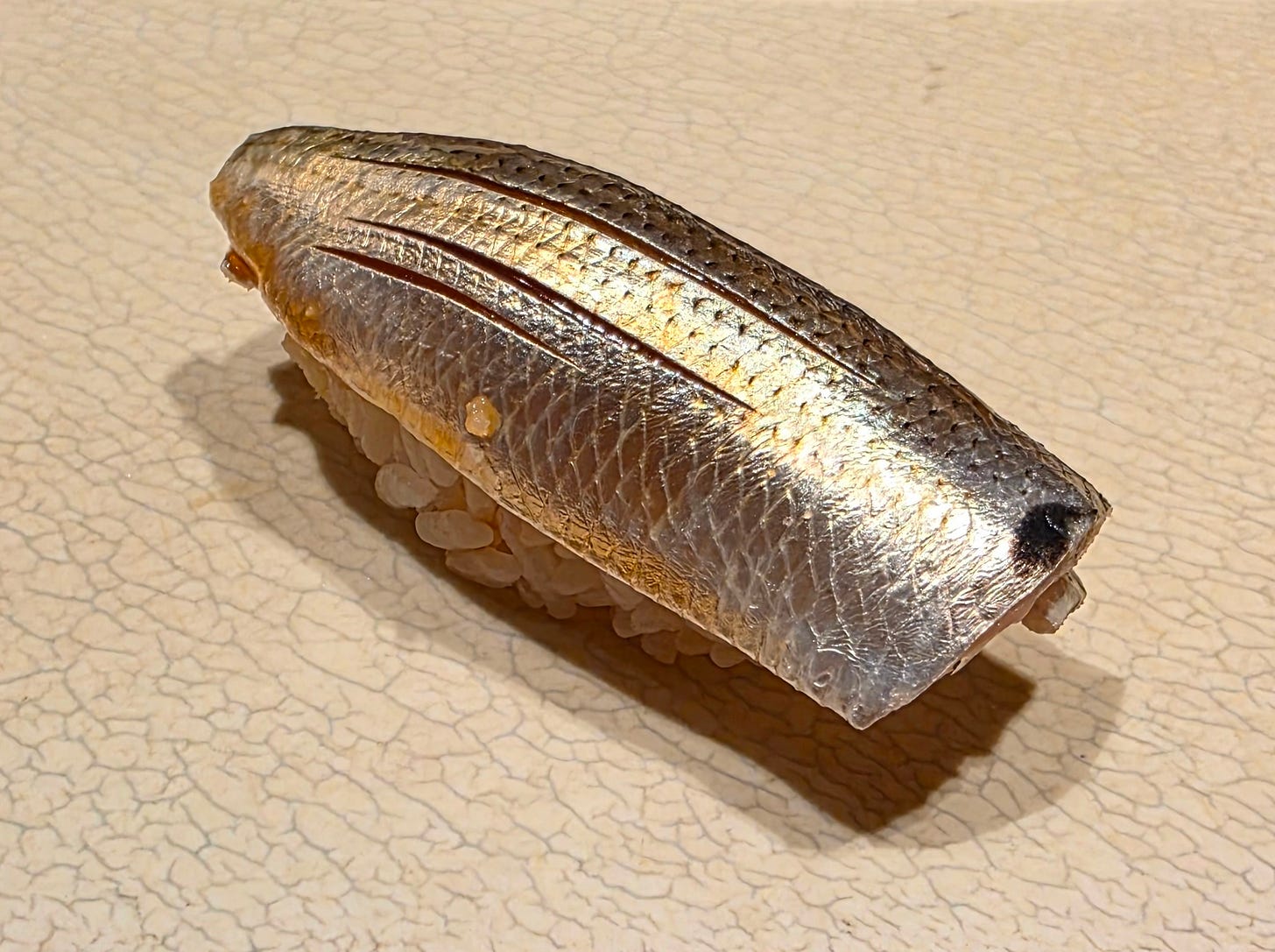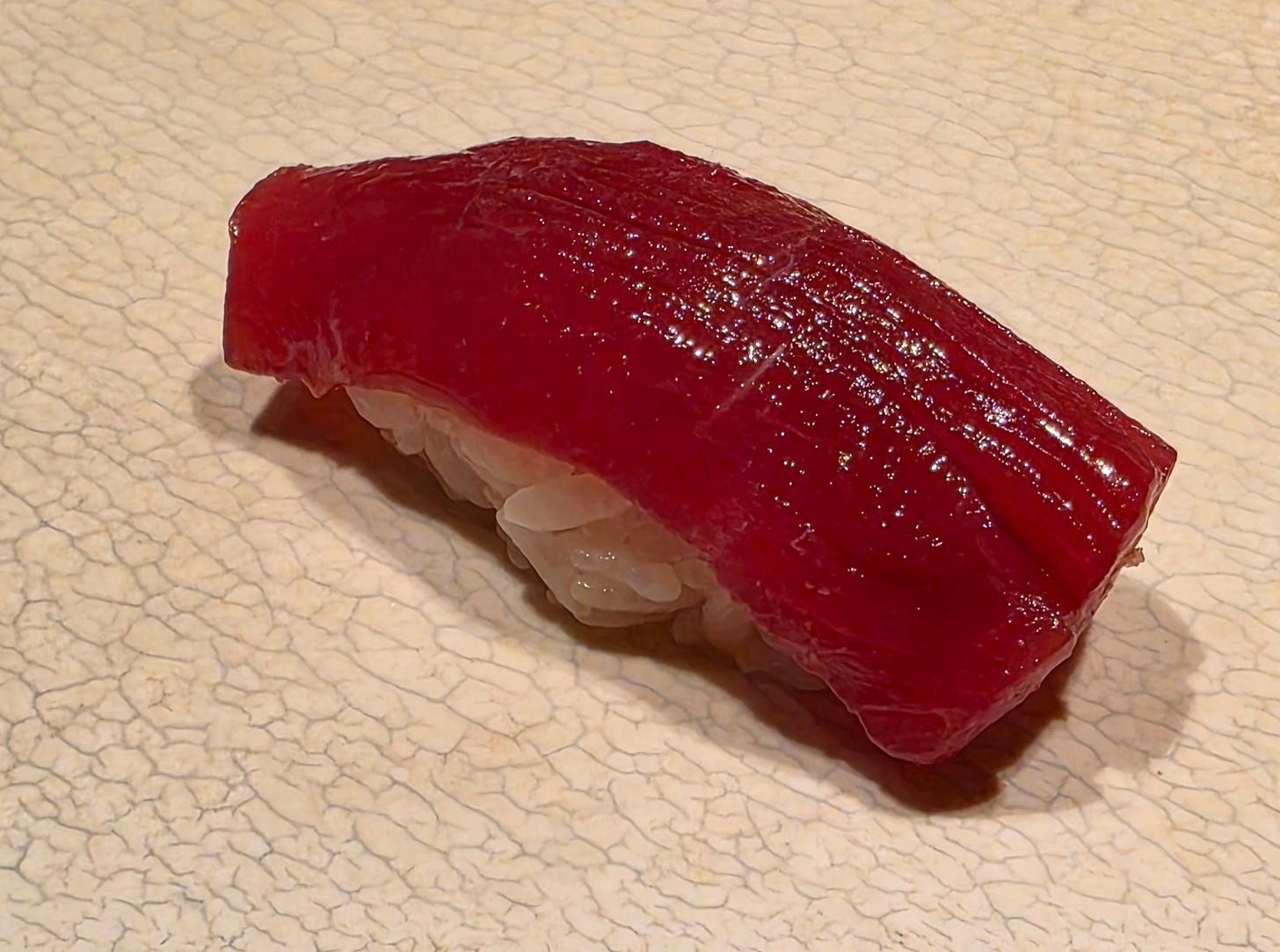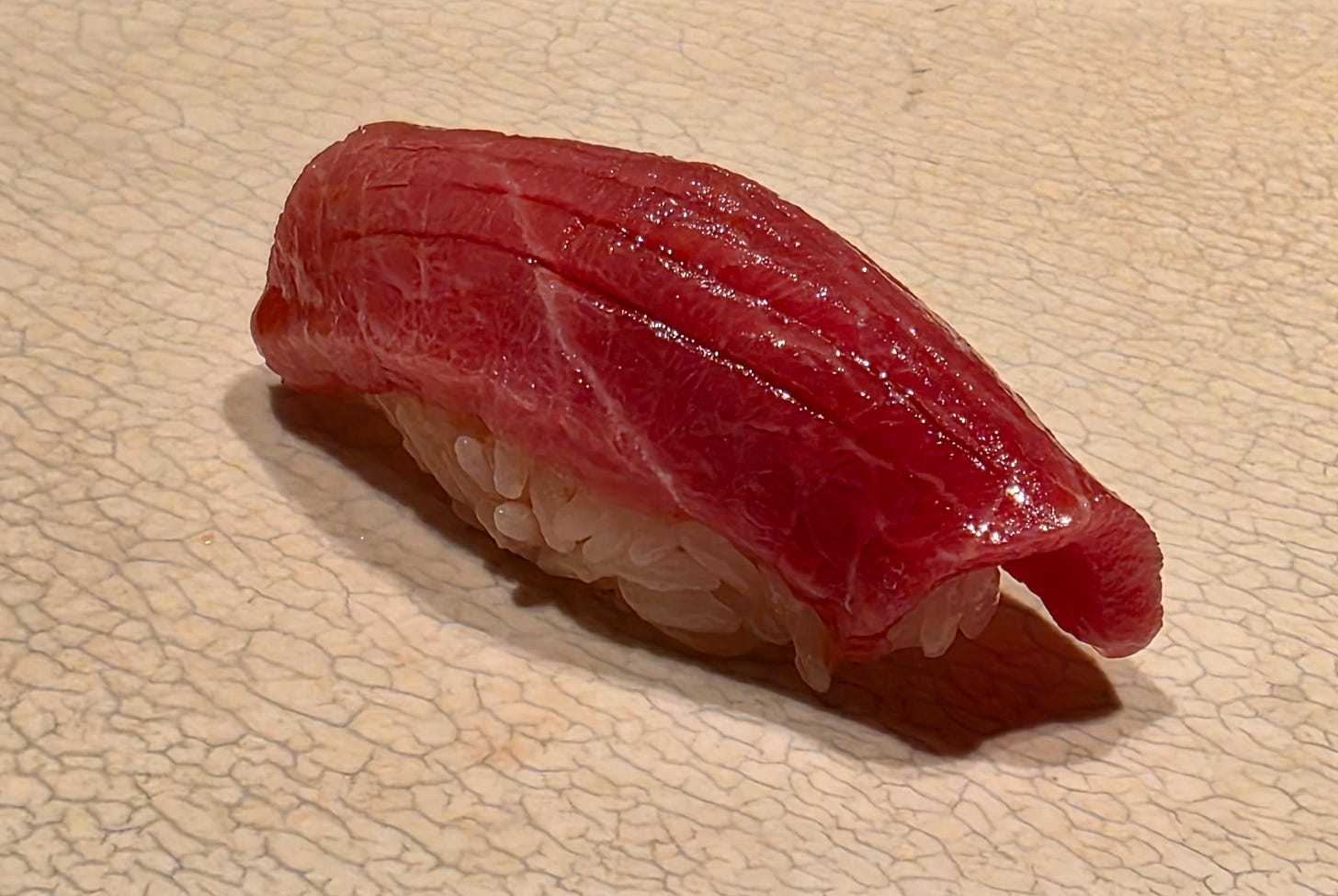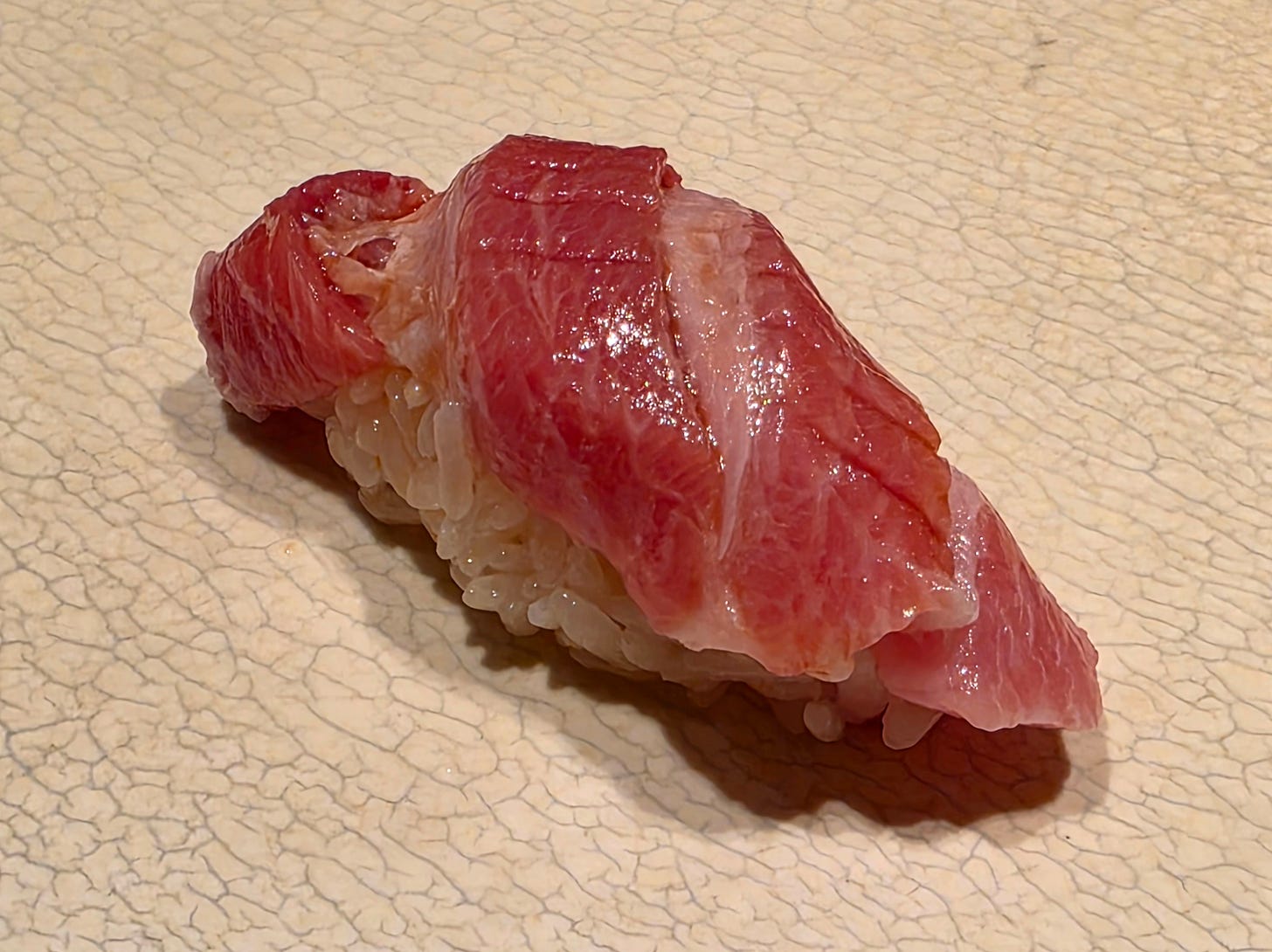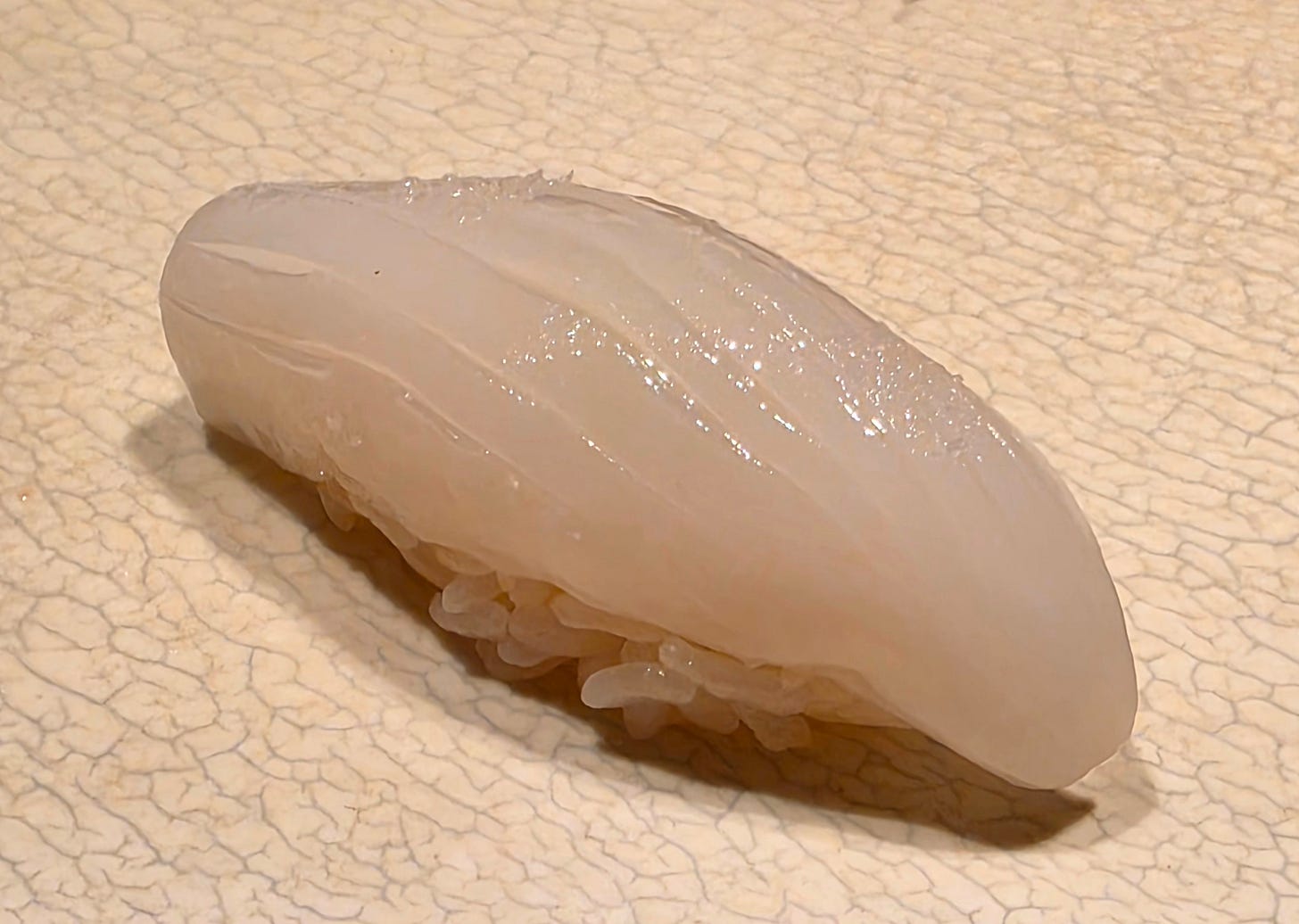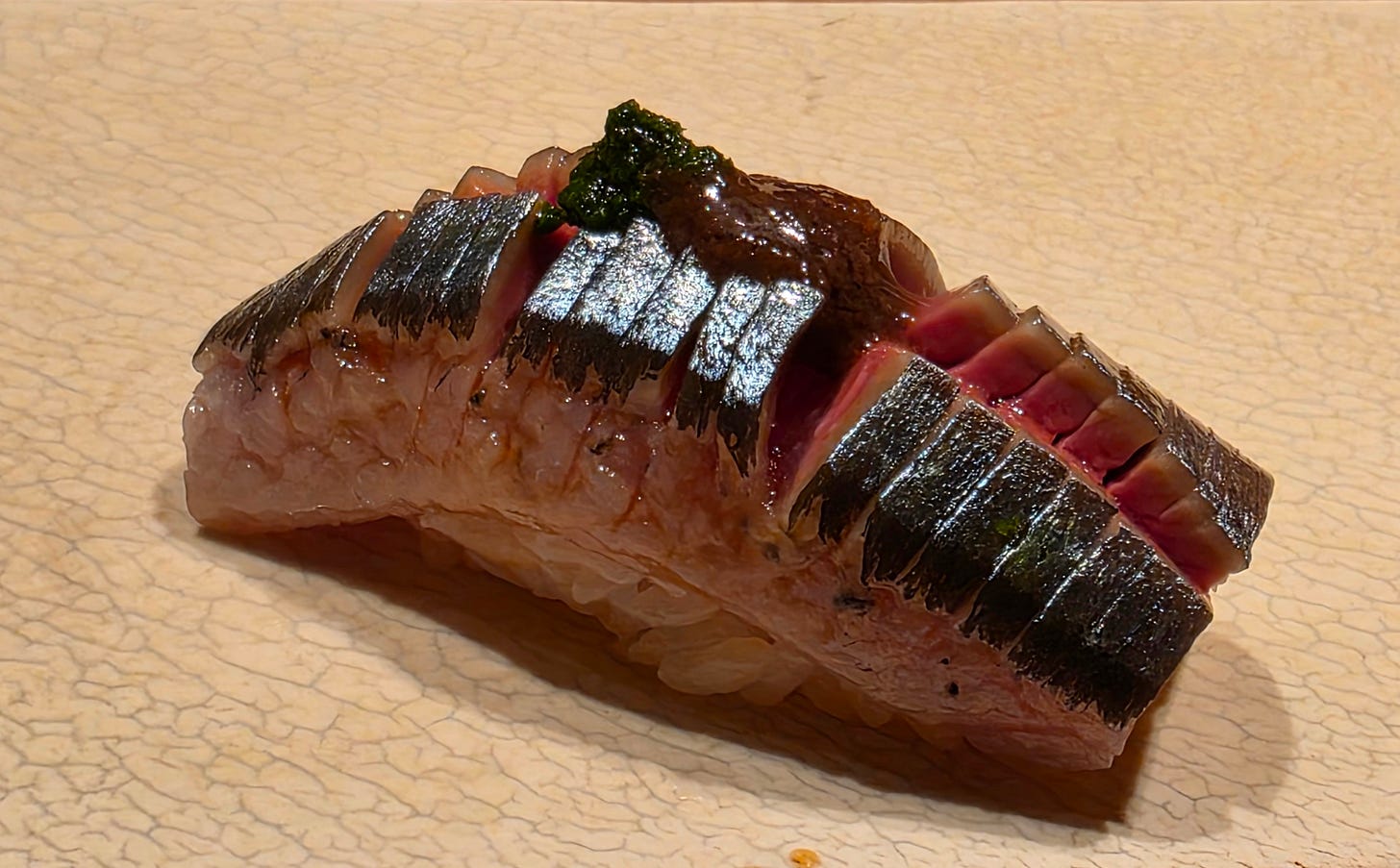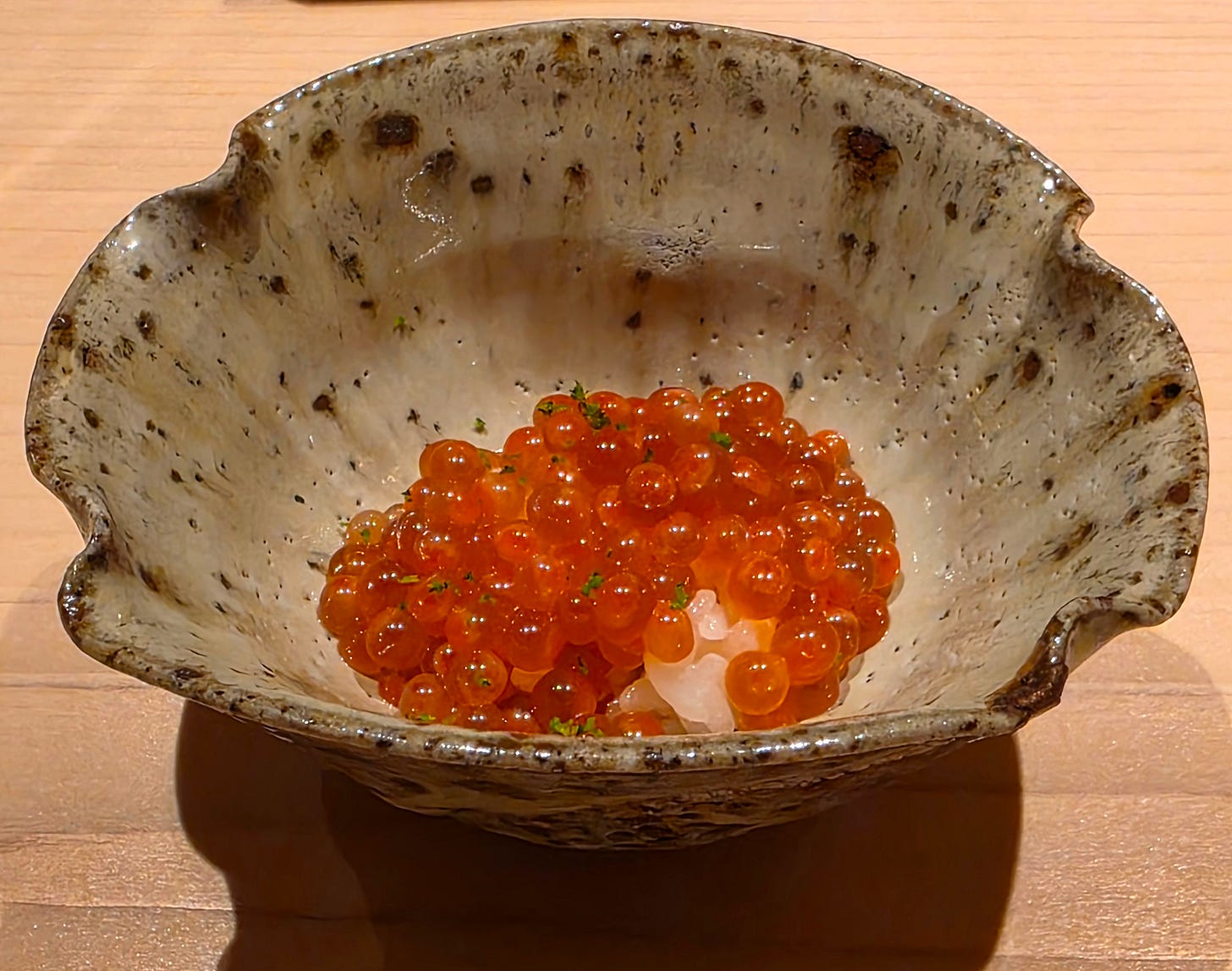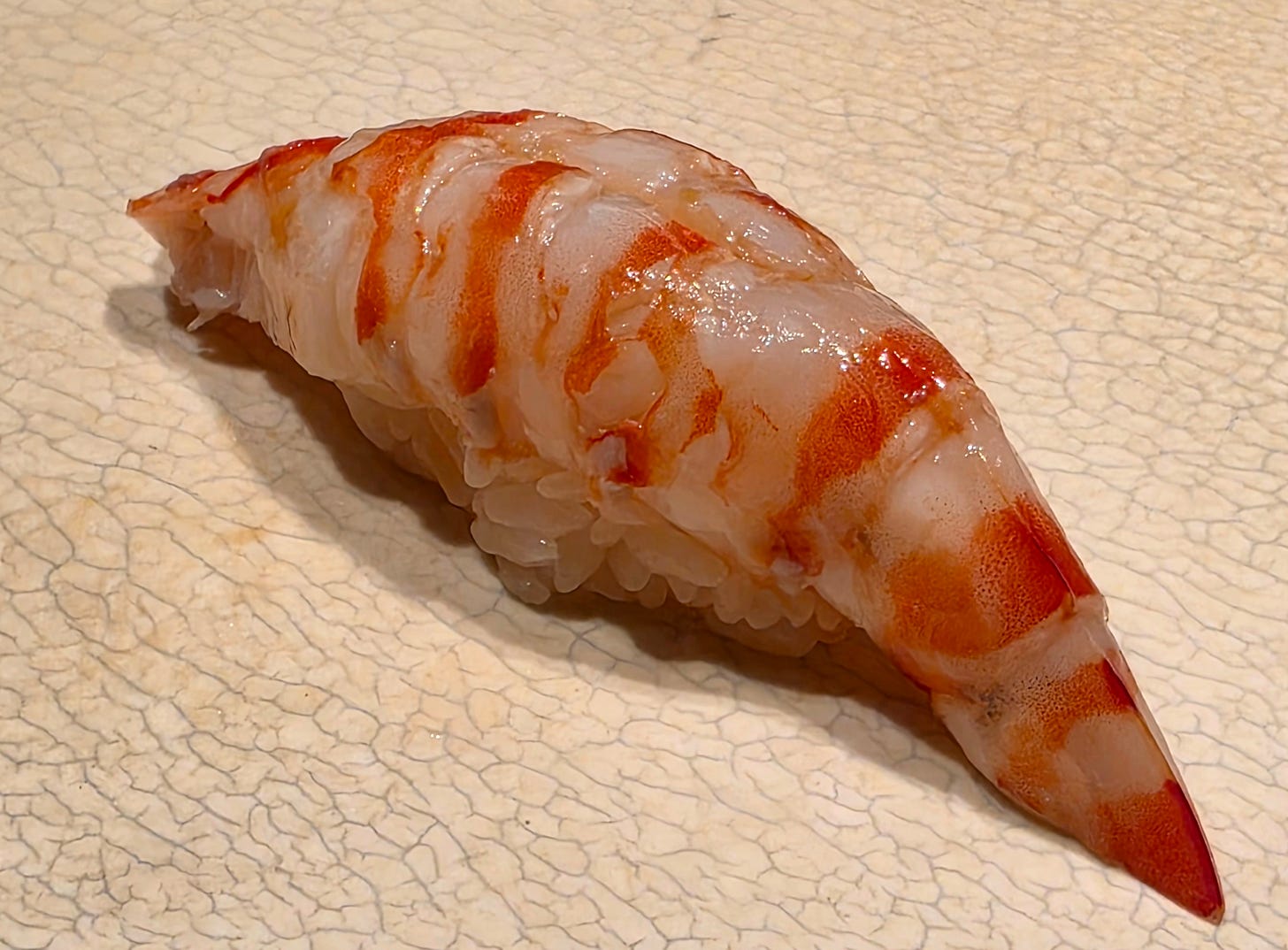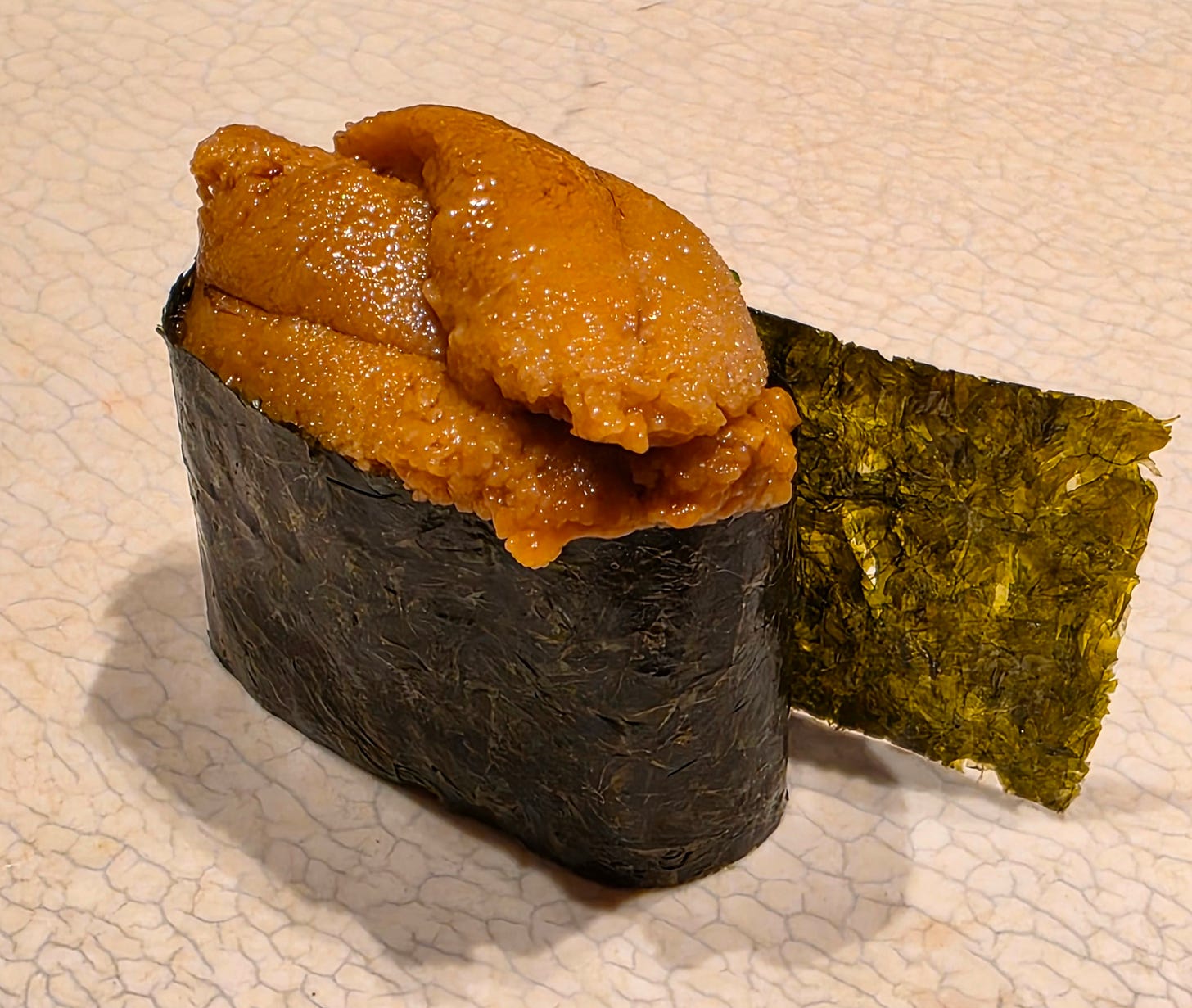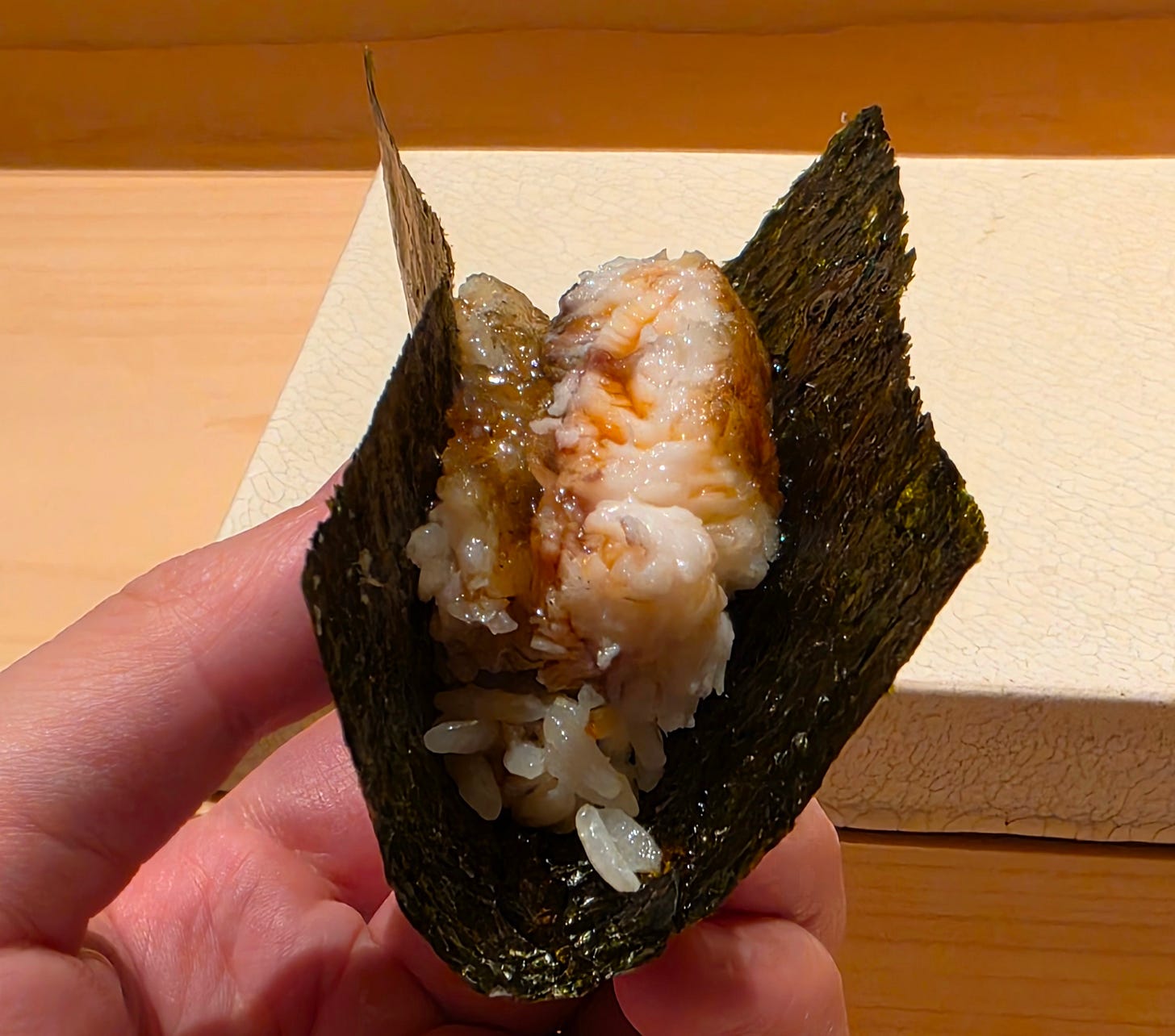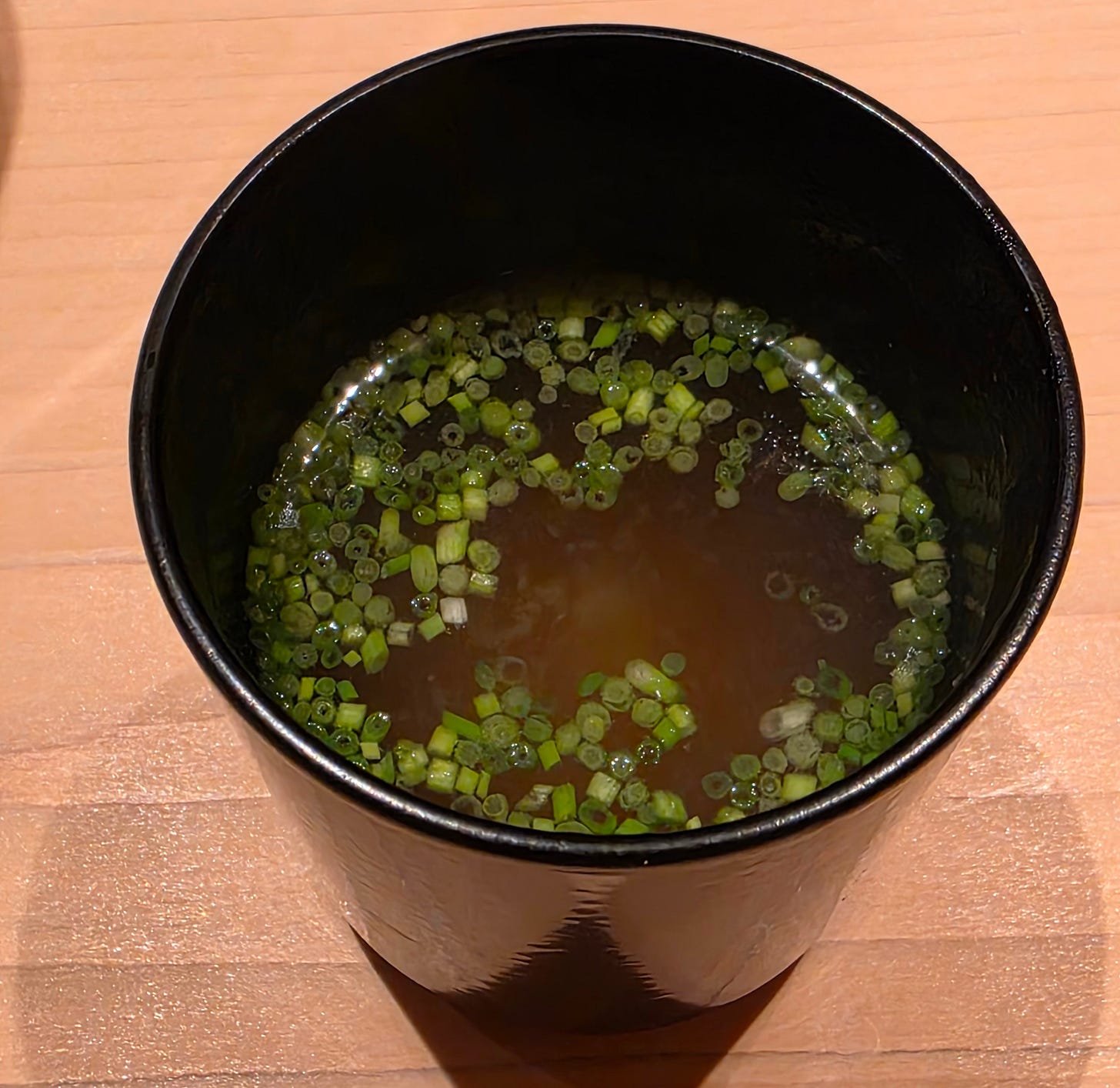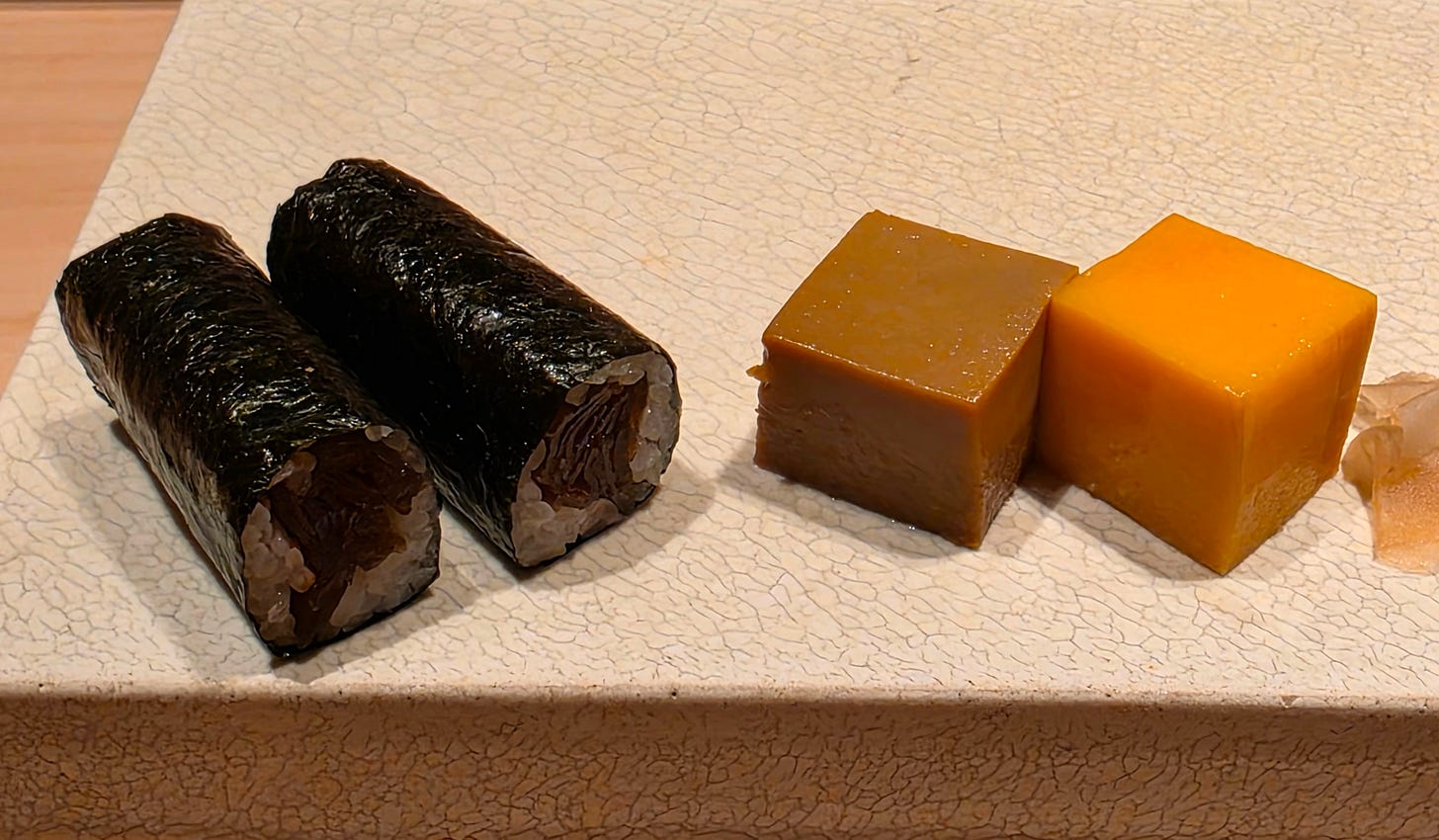Sushi Fujimoto
An Interesting Night involving a Field Promotion in Hong Kong
Sushi Fujimoto is an intimate Edomae-style sushi restaurant, emphasizing traditional Japanese techniques with fresh seafood flown in from Japan.
The head chef and owner is Kenichi Fujimoto, a Japanese sushi master born and raised in Ibaraki Prefecture. Unlike many in the field, he initially pursued a career in hairdressing before entering the sushi world at age 22. His professional sushi journey began in earnest at 27, when he trained under renowned sushi master Shinji Kanesaka at the Michelin-starred Sushi Kanesaka, spending 17 years honing his skills at top Michelin-starred establishments in Tokyo. He later worked under Takashi Saito and served at the one-Michelin-starred Sushi Kanesaka in Macau.
Before opening his own restaurant, Fujimoto was the sushi chef at the Michelin-starred Sushi Saito inside the Four Seasons Hotel Hong Kong, where he helped elevate it to two Michelin stars. With over 20 years of experience, he focuses on simplicity and precision in his craft, embodying the philosophy that "simple is best."
Arriving at the sixth floor restaurant, we were quietly ushered to the nine-seat sushi counter, where the sous was finalizing the mise en place for the night.
Chef Fujimoto was already working on one of the appetizers, deep in conversation with one of the patrons. Apparently, there were multiple celebrations that night, and as we’d find out, Chef Fujimoto likes partying.
For an amuse bouche, we were presented with a sake glass of abalone soup - the rich, briny braising liquid from the giant abalones that would be served later.
We were presented with the giant abalone, from the Shimane prefecture, near Hiroshima. They were specially selected for Chef Fujimoto and each weighed nearly a kilogram!
My companion ordered the sake, one of the sweetest I’ve tasted. Floral and light in nature.
The first appetizer was two slices of the giant abalone from earlier. We were encouraged to eat one slice by itself, and use some fresh grated wasabi on the other and dip it in the rich abalone liver sauce. Super tender and an amazing start to the meal.
Chef Fujimoto preparing the next dish, a rice-less maki.
Interestingly the next appetizer was a maki roll, but made without rice and incorporating different cuts of iwashi (sardines), pickled ginger and spring onion. The sweetness and acid from the pickled ginger cut into some of the oily fishiness from the sardines.
The third appetizer featured the tuna loin that Chef Fujimoto was working on while we entered the restaurant.
Two thin slices of Skipjack tuna, with one side seared directly on Japanese Binchotan charcoal, briefly smoked and topped with a small pile of chopped scallions.
At this point, a large vat of rice was brought out, and Chef Fujimoto took great pains to explain the seasoning and cooling of the rice in preparation for the main event.
We were presented with a small rice ball to finish off our abalone liver sauce from earlier, leaving nothing to waste.
The next course were two small pieces of steamed octopus marinaded in a sweet and soy dressing. Fall apart soft and absolutely perfectly seasoned.
The final appetizer was Hokkaido hairy crab, served in a thickened bonito broth and topped with a sprinkling of lime zest.
Finally, it was time for the main event. The chef and sous finished the preparations while we finished the appetizers, expertly cutting thing slices of fish for the nigiri to come.
The first piece was a summer yellowtail. Firm, slightly oily, and a great start to the nigiri.
The next piece was an Kohada or adolescent gizzard shad, served with shallow cuts as typical. This piece is often used to demonstrate the skills of a sushi chef as it requires elaborate preparation - precise deboning of all the tiny bones, a light salt cure and vinegar rinse to prevent from tasty fishy.
Moving into the tuna, first the least fatty piece, the akami, from the top loin of a bluefin tuna.
Next, the chutoro, or medium fatty tuna, from the side belly of the bluefin.
Rounding off the tuna, the otoro, or fatty tuna, a pure fat bomb from the inside of the belly, loosely held together and almost already falling apart.
Bringing down the fattiness, the next piece was cuttlefish, lightly scored and served with a light sprinkling of salt and yuzu. Normally I’m not a big fan of squid or cuttlefish nigiri, but the salt helped firm up the proteins and prevent the cuttlefish from feeling slimy.
The second preparation for the cuttlefish involved briefly poaching the tentacles.
My highlight of the night, the Pacific Saury or Mackerel Pike. We were told that this year was probably the best year for the fish in the past five and it was the perfect height of season. The innards are strongly bitter, and were prepared into a complex layered sauce that topped the fish. The piece also demonstrated the precise shallow cuts from the chef, creating a fall apart in mouth tenderness.
Next, a rice ball topped with Ikura or salmon roe, the surprise being that the rice ball was marinaded in a rich cold broth.
The ebi, or sweet tiger shrimp, poached briefly, butterflied and pressed into the nigiri. At this point, we started noticing that the rowdiness of the crowd was starting to affect Chef Fujimoto.
You see - it is traditional gesture to offer the chef a drink to show your gratitude - and if you’re drinking heavily, you may offer them a few drinks throughout the night. And if multiple patrons are partying, and ordering large bottles of sake, you may try to get the chef to down the sake with you.
By the time we got to the ebi, we could see that the Chef was struggling a little to remove the shrimp from the skewers and butterfly the shrimp. As the partying continued, the Chef left the counter, but we barely noticed.
That is, until we realized he had left for the night. The staff apologized profusely, as the sous got a field promotion to finish the meal.
The sous was much less accepting of alcohol, and managed to finish the night unscathed by the rowdy patrons. He managed to prepare the uni gunkan, highlighting Hokkaido sea urchin.
Finally, a grilled anagi taco. served with burning hot anagi that I could feel through the seaweed. Topped with a thick, slightly sweetened sauce, a great end to the main course.
As traditional, a small cup of miso soup.
I guess these could be considered the petit four - pickled gourd maki and two kinds of egg castella, one regular, and one highlighting brown Okinawan sugar.
Finally, as one of the celebrating patrons, they brought out a slice of cake, and a slice of intensely sweet Japanese muskmelon.
Overall, this was a hilarious night. The food itself - good, not amazing. The anagi taco and the pacific saury were particularly memorable. The rest of the experience - hilarious. You had a bunch of rowdy middle aged woman flirting with the drunken chef who disappeared partway through the meal. The staff apologized profusely, and the sous accepted his field promotion with a resigned smile. It was difficult to do anything other than smile and laugh about the absurdity of the situation - apparently it wasn’t even an uncommon thing with the rowdy weekend crowd.
Total Damage 7000 HKD/2 people


